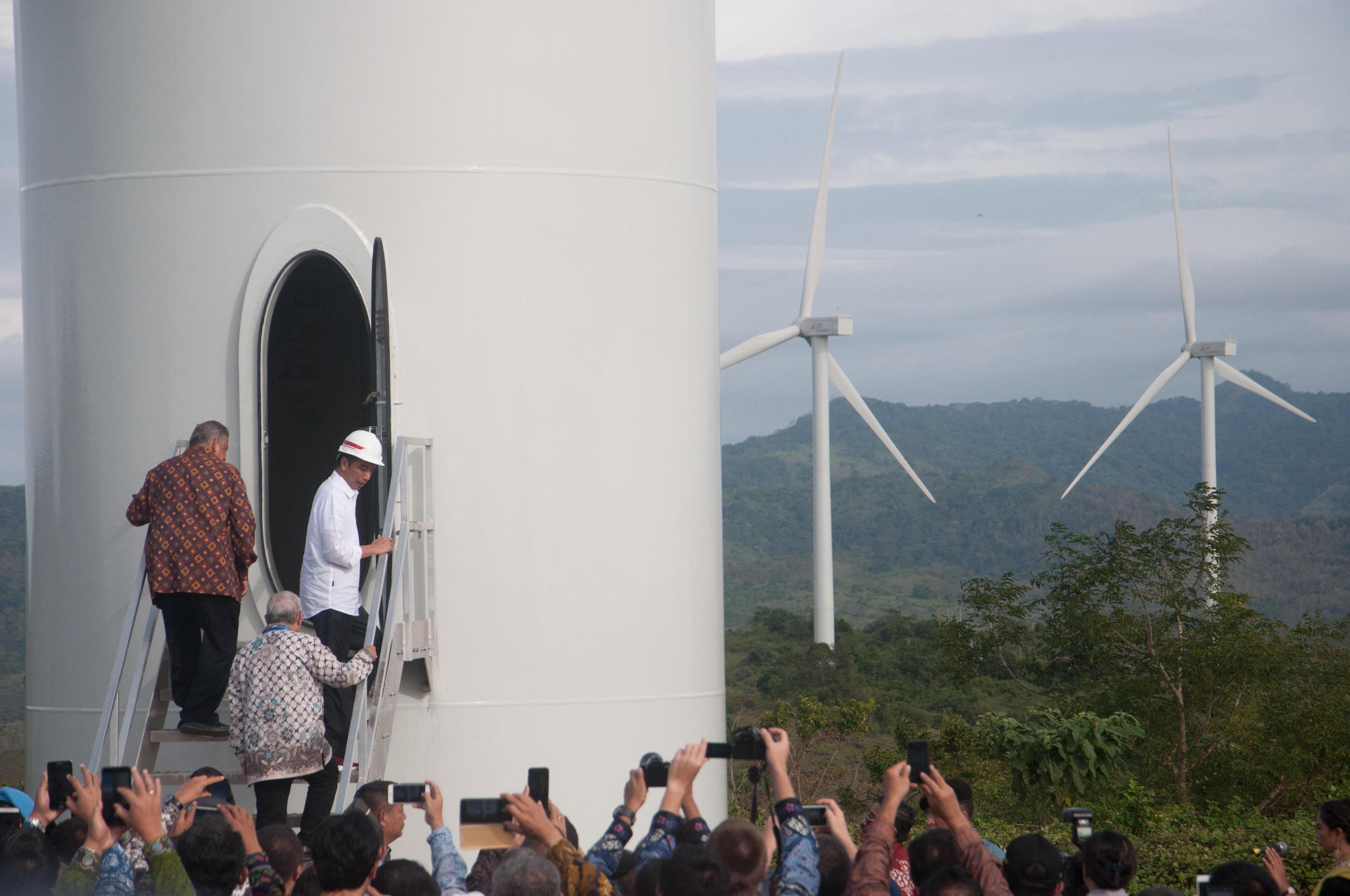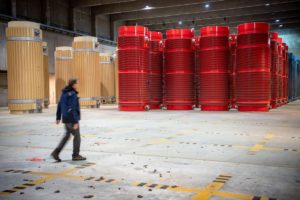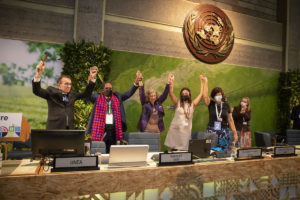Since coming to power in October 2014, President Joko “Jokowi” Widodo has sought to refurbish Indonesia’s derelict infrastructure, not least in the provision of energy. His administration has carried over a previous government target, set in early 2014, of deriving 23% of the country’s primary energy needs from renewable sources by 2025, targeting geothermal, wind, bioenergy, solar, hydropower, and ocean-based kinetic and thermal energies in its national energy plan.
Such infrastructure drives are constrained by legislative restrictions on the size of the country’s fiscal deficit, which must be kept under 3% of GDP. This limits the mobilisation of Indonesian state-owned enterprises, and impels Jokowi to find partners for infrastructure financing from the private sector and abroad. A prominent step the country has taken to transform its energy portfolio is to increasingly welcome the involvement of foreign firms.
Indonesia’s major international infrastructure partners include Australia, China and Japan, of which China may increasingly be the most appealing, given its companies’ command of and sophistication in renewable energy technologies, such as solar and wind. Some of these companies enjoy financing support from China’s policy banks – the China Development Bank (CDB) and China Export-Import Bank (Chexim) – to secure projects in Indonesia. The general arrangement sees these banks provide loans, while Chinese firms offer technical expertise in the form of engineering, procurement and construction contractors.
President Jokowi has also sought to forge economic ties with China more readily than his predecessor, Susilo Bambang Yudhoyono (2004–2014). His administration’s efforts have included the establishment of a special desk dedicated to attracting Chinese investors, set up in May 2016 by the Investment Coordinating Board (BKPM) – a body that has more actively conducted investment promotion activities in China, in partnership with Chinese banks and business associations.
However, Jokowi’s overtures to China have drawn a reaction from Indonesia’s traditional economic stakeholders, such as Japan. Indeed, after China announced the Belt and Road Initiative (BRI) in 2013, Tokyo launched the Partnership for Quality Infrastructure (PQI) in 2015, seemingly offering an alternative to the BRI with a stated emphasis on the quality, openness and transparency of its projects. Japanese infrastructure exports into Indonesia are facilitated mainly by the Japan Bank for International Cooperation (JBIC) and, to a smaller extent, the Japan International Cooperation Agency (JICA), its overseas development body. Their financial prowess enhances the bankability of projects, especially those with long gestation periods and huge capital outlay, at least at the outset. One of the most prominent examples is the 1,900 MW PLTU Batang in Central Java province, the largest Japanese-financed coal-fired power plant in the Southeast Asian country to date.
US$4.8 billion
The total investment in Indonesia by Chinese firms in 2020
On the surface, such competition between the regional powers may seem to have provided Indonesia with a golden opportunity to extract favourable terms to advance key projects. The theory, it would seem, is that this allows Indonesia to pit one side against the other, bringing about a competition that offers options such as generous financing terms and advanced engineering know-how, which would otherwise be unavailable under normal circumstances. But, as a recent analysis I contributed to the journal Asian Perspective shows, the consequences are not all positive.
It is true Indonesia has benefited from both Chinese and Japanese financial resources, in providing energy to remote communities. A 2019 study covering the investment landscape in Indonesia reveals that, despite being only the tenth-largest investor in Indonesia in 2008, China had grown to become the third-largest investor by 2016. In 2020, Chinese firms invested a total of US$4.8 billion into Indonesia, ranked second only to Singaporean firms ($9.8 billion). Japanese firms came fourth, with a total investment of $2.6 billion. Yet, Japan has for decades ranked as one of the most important investors in Indonesia.
In terms of energy infrastructure, financing for non-renewables has grown faster than for renewables. The dataset used in my analysis shows that as much as 86% of financing from China, led primarily by CDB and Chexim, has been channelled towards coal-fired power plants. Additionally, when compared to the Yudhoyono era, there appears to be a greater willingness by the Jokowi administration to mobilise greenfield investment and combine foreign direct investment with Chinese policy bank financing. More flexible financing patterns increase the bankability of these projects, offering a more acceptable risk-return trade-off to prospective lenders and/or investors.
The situation is somewhat more sanguine in the case of Japan: only 56% of Japanese energy projects have gone towards non-renewable energy infrastructure, with coal-fired power plants at the fore. Although this seemingly puts Japanese financiers in a more favourable light, it must be qualified that the grand total of Japanese energy projects (18) is smaller than China‘s (28), meaning a small sample bias effect could be at play. The broader point is that the ready availability of Chinese and Japanese finance, especially to push coal power, has not only complicated Indonesia’s adoption of renewable energy, but also jeopardised its environmental wellbeing.
Local firms representing entrenched interests are directing foreign-funded capital and technology toward non-renewable energy
Why then has coal power received the lion’s share of energy financing from China and Japan? For one, there is Jakarta’s desire to promote infrastructure through more market-based instruments, as it tries to keep the fiscal deficit beneath 3% of GDP. Although the fiscal limit has been waived for three years from 2020 to help Indonesia weather the fallout of the Covid-19 pandemic, the overall impact is rather clear: it has had the unexpected effect of widening opportunities for both Chinese and Japanese non-renewable energy players, and their financiers, to establish collaborative ties with major Indonesian private firms. Many of these Indonesian firms are experienced in coal mining and processing, but have minimal exposure to managing power plants. By forming coalitions with Chinese and Japanese non-renewable energy firms, Indonesian businesses have extended their niche into power operations, while securing a ready-made market for their coal supplies.
Put another way, these local firms represent entrenched interests that are directing foreign-funded capital and technology toward non-renewable energy infrastructure. Perhaps more worryingly, the nation’s mining industry – of which coal is a core component – has been alleged to have financed the political campaigns of prominent Indonesian politicians in the country’s 2019 general election.
What are the implications for the development of renewable energy? Firstly, there is the need to better understand the domestic political economy, including pre-existing or even historical practices in the energy infrastructure sector. Policies and business decisions do not operate in a vacuum: a more informed view helps policymakers and analysts unpack how local business groups are likely to forge ties with foreign financiers. A better understanding can allow them to work to construct policies or incentives that prevent these ties from forming, while redirecting resources towards partnership with renewable actors.
Lastly, it is important to promote greater transparency of infrastructure undertakings. One of the possible avenues is to pressure the Indonesian government and business groups, as well as their international financiers, to be more transparent in releasing information to the public, especially those pertaining to their financing and environmental impacts. A more transparent setting in turn would encourage all these parties to up their game in terms of stakeholder engagement and environmental management.
To this end, a more coordinated and persistent effort, involving local and international interest groups, such as NGOs, must be considered. With China’s announcement last September that it will end support for new coal power plants overseas, and signals from Japan of a slow – if not steadfast – move away from coal finance, the moment is right for these movements to dovetail, and bring urgency to Indonesia’s drive towards renewables.
Guanie Lim is an assistant professor at the National Graduate Institute for Policy Studies (GRIPS), Japan. His main research interests are comparative political economy, value chain analysis, and the Belt and Road Initiative in Southeast Asia.








